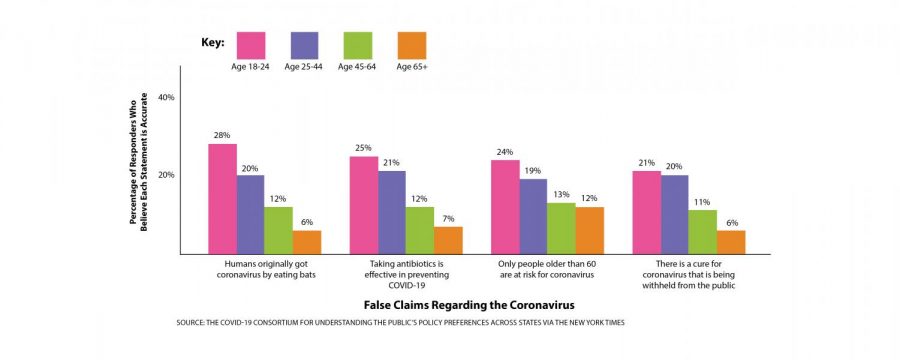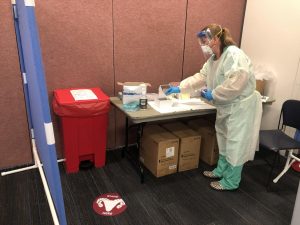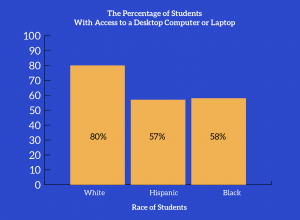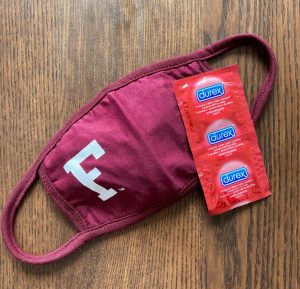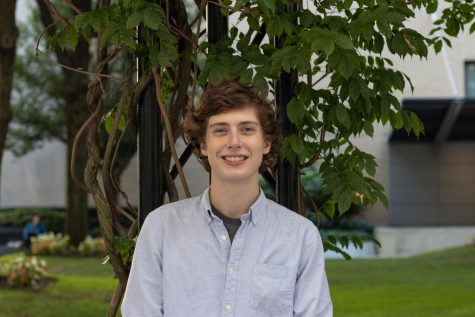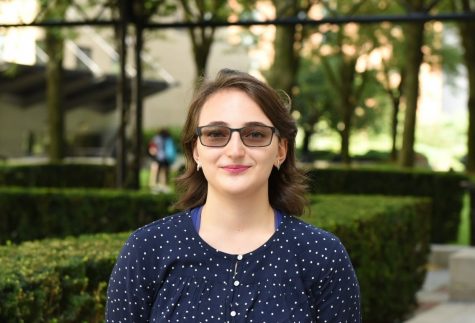Testing Misinformation: Staying Informed and Safe in the Internet Age During a Pandemic
Virtual misinformation has created confusion about Fordham’s COVID-19 testing
September 30, 2020
There’s a virus currently spreading at unfathomable speed. It indiscriminately targets community members and, although seemingly harmless, it has potentially fatal consequences. It isn’t COVID-19; it’s misinformation on the internet, and, like the coronavirus, it needs to be addressed and combated in order for us all to stay safe.
In times of public emergency and anxiety, it’s not uncommon for hysteria and ill-informed rumors to take flight. History is full of instances where rumors and assumptions, particularly those in already unstable environments, give way to mass hysteria and needless suffering, from the Salem Witch Trials to the peculiar “Dancing Plague of 1518,” when hundreds of Strasbourgers took to the streets in a jittery, involuntary dance for days on end.
The use of social media and the internet acts as a double-edged sword, allowing for an “infodemic,” or overabundance of information where misinformation and disinformation, information that is intentionally wrong, can quickly circulate.
Glenn Hendler, professor of English and American studies at Fordham, defined misinformation as any statement on a topic that experts on said topic clearly agree is false. Hendler gave an example of misinformation by referencing scientific consensus on climate change, explaining that “There is a range of opinions about how much, and there are different theories about the mechanisms for that contribution, but no disagreement that it’s happening.”
In the case of the COVID-19 pandemic, Hendler blamed online misinformation for the United States’ relatively poor performance in handling the coronavirus than other countries, stating that “the harm (misinformation) does is killing over 200,000 people so far, and sickening way more than that.”
Environments marred by troubles and violence provide the necessary conditions for misinformation to spread unchecked. In dealing with the pandemic, the Fordham community isn’t immune.
The Instagram account @lc_sinners previously shared messages from students claiming they were only allowed to be tested twice at Fordham’s on-campus testing facilities.
Maureen Keown, director of University Health Services, clarified that on-campus testing is currently concentrated “on getting students through the second round of required tests and on testing of students who are not well or students who may have a possible exposure.”
A community-wide email from Vice President for Administration Marco Valera also provided further clarification about testing on Sept. 29. It explained that the university’s testing facilities are restricting their acceptance of walk-ins due to higher rates of testing going over weekly testing capacity.
On-demand testing will resume in the near future on a case-by-case basis, according to the statement. Students who schedule their test in advance will not be limited as long as they wait 7 days before testing again.
On Sept. 28, @lc_sinners acknowledged the conflicting information after speaking with members of @letstalkaboutitfordham, another Fordham-centered Instagram page.
“We are in talks about having a more accurate take of the fordham-testing situation on their page,” read the statement from @lc_sinners in the post.
Zoe Demacopoulos, Fordham College at Lincoln Center (FCLC) ’21, felt uncomfortable about the spread of misinformation within the Fordham community. “I have been very disgruntled and irritated with people spreading information around campus without fact checking it,” Demacopoulos said.
Social media plays a large role in circulating misinformation. The World Health Organization pointed out that the COVID-19 pandemic is the first virus of its scale to break out during today’s era of social media. The use of social media and the internet acts as a double-edged sword, allowing for an “infodemic,” or overabundance of information where misinformation and disinformation, information that is intentionally wrong, can quickly circulate.
Contrary to popular belief that older people are the most vulnerable to misinformation on the internet, a New York Times survey found that people under 25 are the most likely to fall for COVID-19-related misinformation about the virus’s severity and origins. Respondents under 25 had an 18% probability of believing an untrue or misleading statement about COVID-19.
In comparison, respondents 65 years or older were half as likely — 9% — to fall for and believe misinformation about the coronavirus.
Now, Fordham Lincoln Center’s United Student Government (USG) is also making it a priority to address misinformation and keep students up to date.
Loreen Ruiz, Fordham College at Lincoln Center ’21 and president of USG, stated that “Fordham has made it clear that it is committed to continuing their implementation of measures regarding transparency, and USG is in direct conversation with administrators across departments to make sure student feedback is heard and considered seriously.”

